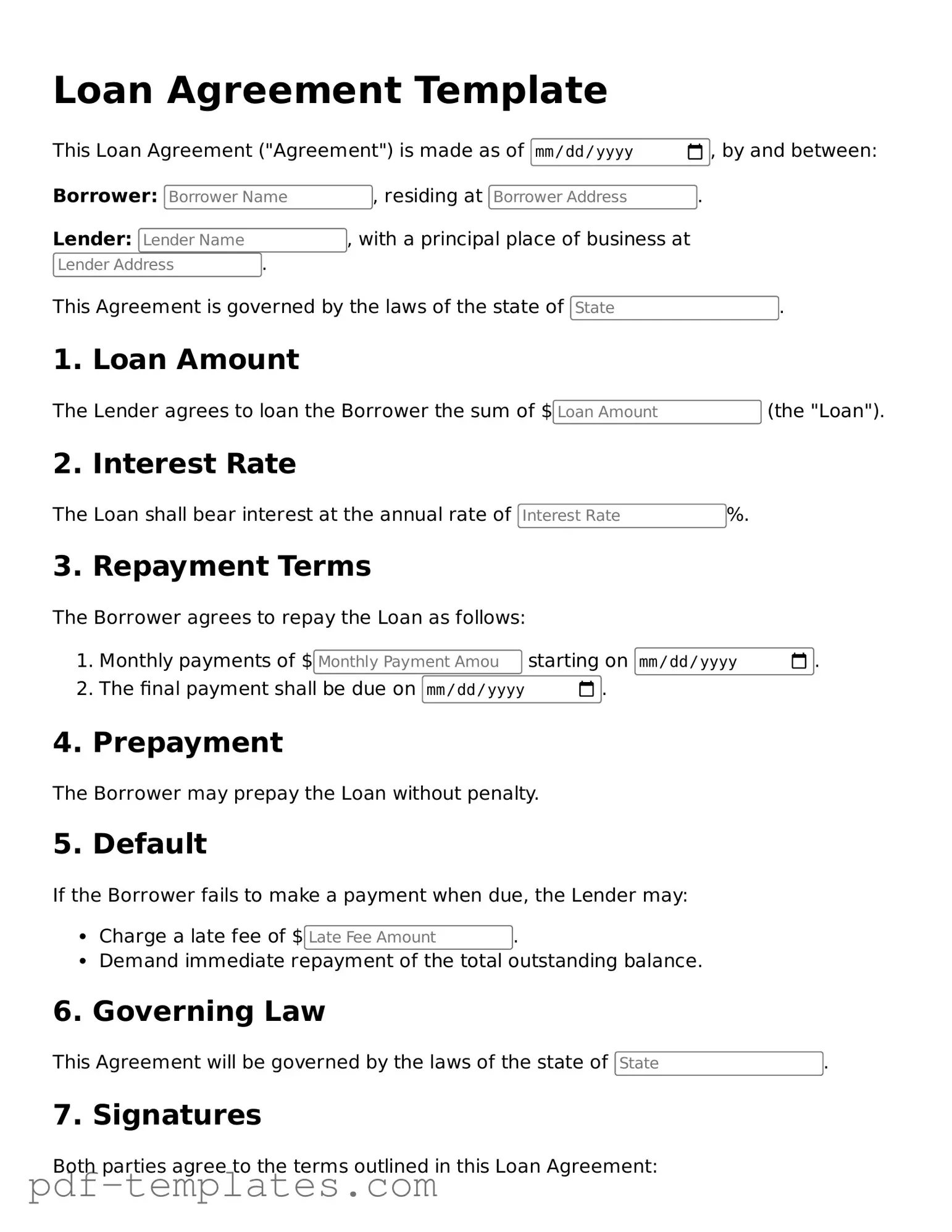A promissory note is a written promise to pay a specific amount of money to a designated party at a defined time or on demand. Like a loan agreement, it outlines the terms of the loan, including the interest rate and repayment schedule. However, a promissory note is typically simpler and may not include all the detailed terms and conditions found in a full loan agreement. It serves as a straightforward acknowledgment of debt, making it a common tool for personal loans between friends or family members.
A mortgage agreement is a specific type of loan agreement that is secured by real property. This document outlines the terms of the loan used to purchase a home or other real estate. Similar to a loan agreement, it includes details about the loan amount, interest rate, and repayment schedule. However, a mortgage agreement also includes provisions regarding the property itself, such as what happens if the borrower defaults. This added layer of security for the lender distinguishes it from a standard loan agreement.
An installment agreement is a contract that allows a borrower to repay a debt in scheduled payments over time. This document shares similarities with a loan agreement in that it specifies the total amount owed, the interest rate, and the payment schedule. However, installment agreements are often used in situations where a borrower needs to settle a debt in smaller, manageable amounts rather than obtaining a new loan. This makes it a useful option for individuals looking to pay off existing obligations.
A credit agreement, typically used by financial institutions, outlines the terms under which a borrower can access credit. Like a loan agreement, it specifies the amount of credit available, the interest rate, and repayment terms. However, credit agreements often allow for revolving credit, meaning borrowers can draw from the credit line multiple times up to a set limit. This flexibility distinguishes credit agreements from traditional loan agreements, which usually involve a fixed sum that is paid back in installments.
An equipment lease agreement is a contract that allows one party to use equipment owned by another party for a specified period in exchange for payment. This document is similar to a loan agreement in that it outlines the terms of the financial arrangement, including payment amounts and duration. However, rather than borrowing money, the lessee pays for the use of the equipment. The agreement may also include terms regarding maintenance and insurance, which are less common in traditional loan agreements.
A personal guarantee is a document in which an individual agrees to be responsible for another party's debt if that party defaults. While it is not a loan agreement itself, it often accompanies loan agreements, especially for small businesses. It provides additional security for lenders by ensuring that they have recourse to the personal assets of the guarantor. This document emphasizes the personal responsibility aspect of borrowing, which is a critical element in many loan agreements.
A lease purchase agreement combines elements of a lease and a purchase agreement. It allows a tenant to rent a property with the option to buy it later. Similar to a loan agreement, it outlines payment terms and conditions, but it also includes provisions for eventual ownership transfer. This type of agreement can be beneficial for those who may not currently qualify for a mortgage but wish to secure a future purchase.
A joint venture agreement is a contract between two or more parties to undertake a specific project or business activity together. It is similar to a loan agreement in that it outlines the contributions of each party, the financial terms, and the responsibilities involved. However, joint ventures typically involve shared profits and losses, which sets them apart from loan agreements that focus primarily on repayment of borrowed funds.
A business loan agreement is tailored specifically for business financing. It outlines the terms under which a lender provides funds to a business, including interest rates, repayment schedules, and collateral requirements. While it shares many similarities with a personal loan agreement, the business loan agreement often includes additional clauses related to business operations and financial reporting. This specificity helps protect the lender's investment while providing the business with necessary capital.
